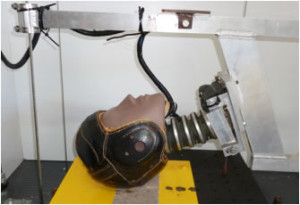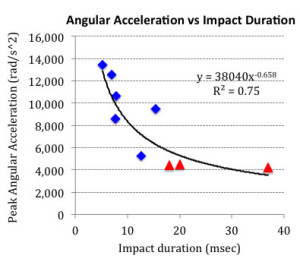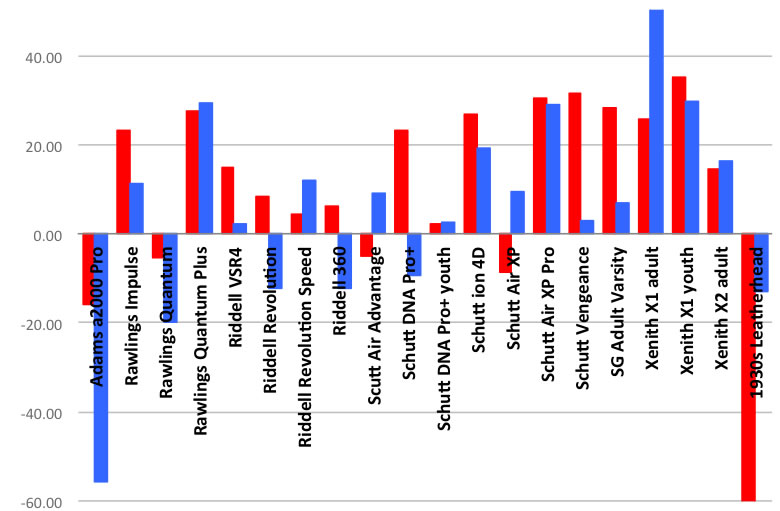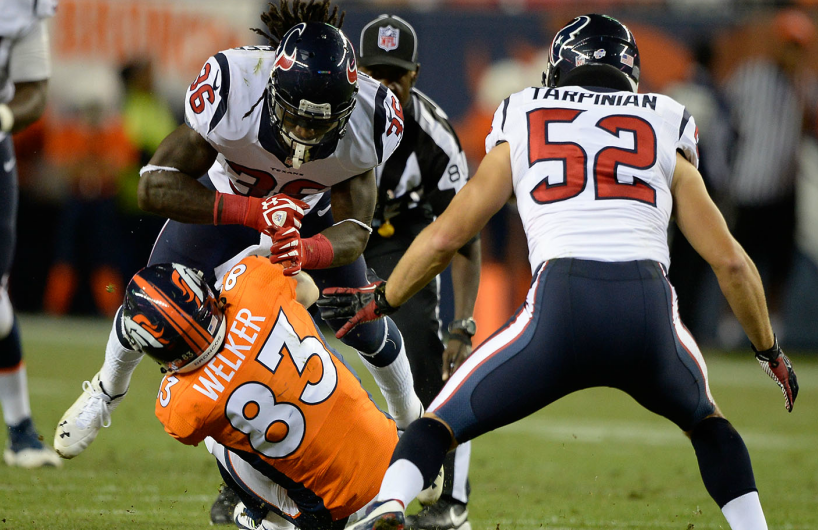How Well Do Football Helmet Protect Against Concussion and Brain Injury?
Football helmet research presented by John Lloyd, PhD – BRAINS, Inc. & Frank Conidi, MD – Florida Center for Headache and Sports Neurology at the 66th Annual Meeting of the American Academy of Neurology, 2014
YouTube link to video on Biomechanics of Football Helmets
Sports related concussion is the most widely publicized neurological disorder, with football accounting for the highest incidence across all sports. There is a silent epidemic of these invisible injuries across players of all ages from youth through professional, resulting in a 3-fold increase in ER visits among high school players from 2000-2010. It is estimated that a quarter of a million of these injuries each year have long-term consequences. A single moderate to severe brain injury can leave one at risk for early onset dementia, while repeated mild concussions may have the same effects (Giza).
The football helmet became mandatory in the 1930’s to provide protection against catastrophic head injuries. Over the past eighty years there have been significant modifications in football helmet design. Yet despite advances in technology there is still little evidence that helmets offer significant protection against concussion and traumatic brain injury (Giza). hile the widely utilized Simbex HITS system and the Virginia Tech STAR rating system attempt to measure helmet performance, neither offer a direct measure of concussion or brain injury risk.
Methods
According to Holbourn, risk of focal head injury, such as skull fracture and brain contusion, can be expressed in terms of linear acceleration, while the risk of concussion, axonal injury and diffuse brain injury is associated with angular/rotational acceleration. The standard NOCSAE / ASTM helmet tests only measure forces associated with linear acceleration and therefore fail to account for risk of brain injury.

A modified test apparatus, incorporating a Hybrid III crash test dummy head and neck, has been validated by Caccese and Lloyd. This method induces a rotational inertia on impact, thereby facilitating measurement of risk of focal head and diffuse brain injuries.
We purchased 60 football helmets, including three samples each of 20 different models. All helmets were dropped five times from a height of 2.0 meters onto a steel plate, generating an impact velocity of 13.9 mph.
Football Helmet Results
Our findings show that football helmets vary widely in terms of their performance to protect against focal head injury and concussion / diffuse brain injury. All tested football helmets, including the 1930s leatherhead meet the minimum performance criteria of 275G as set by the ASTM F717 standard. However, this standard does not account for duration of impact, which is a critical factor. Moreover, ASTM F717 does nothing to set helmets performance standards in terms of protection against concussion and brain injury.
 By design, helmets reduce impact force by increasing the impact duration. But, as demonstrated by Depreitere (blue) and Lowenhielm (red) increasing impact duration actually lowers the brain injury threshold.
By design, helmets reduce impact force by increasing the impact duration. But, as demonstrated by Depreitere (blue) and Lowenhielm (red) increasing impact duration actually lowers the brain injury threshold.
Head injury risk was calculated with respect to the140g threshold for 7msec impact documented by Ono, wwhile brain injury risk was calculated based on Ommaya’s1700 rad/s^2 tolerance limit for moderate AIS2 brain injury, which concurs with Rowan and Duma’s top 25% of sub-concussive impacts.
Results are presented below, where % reduction of head injury risk is shown in red and % reduction of concussion/mTBI is presented in blue.
Bars above the x-axis indicate that the helmet performs better than the documented threshold, while those below the x-axis did not meet our performance thresholds.
It is noted, interestingly, that the 1930s Goldsmith leatherhead helmet actually outperformed several contemporary football helmets in terms of protecting against concussion and brain injury, including the Adams a2000 Pro, the Rawlings Quantum and the Riddell 360.
Based on our research, the top 3 varsity helmets are: Xenith X1, Schutt Air XP Pro, and Rawlings Quantum Plus, respectively. The top 10 helmets are presented below, based on their protection against traumatic focal head injuries and diffuse brain injuries:
Conclusions
None of the football helmets on the market today offer what most would consider adequate protection against concussions and traumatic brain injuries. A shift in thinking towards lighter high-tech materials for helmets, teaching proper hitting and tackling techniques, pre and in-season isometric and isokinetic cervical strengthening programs, and continued concussion awareness and education are the best means of protecting athletes of all levels from the consequences of concussion and traumatic brain injury.
Future Research
It is hypothesized that oblique impacts present even longer impact durations, which may explain why such seemingly innocuous impacts cause increased incidence of concussion.
Embracing the findings from testing of the 1930s Goldsmith leatherhead, a new generation of soft football helmets is proposed, utilizing today’s advanced non-Newtonian materials, which we anticipate might outperform contemporary helmets in terms of protection against both traumatic head and brain injuries.
References
1. Caccese V, Lloyd J, F et al (2014). An Impact Test Apparatus for Protective Head Wear Testing Using a Hybrid III Head-Neck Assembly. Experimental Techniques.
2. Depreitere, B. et al. (2006). Mechanics of acute subdural hematomas resulting from bridging vein rupture, J Neurosurg, 104; 950–956.
3. Holbourn, A.C.H. (1943). Mechanics of Head Injuries. The Lancet p438-441
4. Giza CC, Kutcher JS, Ashwal S, et al. (2013) Evidence based guideline update: Evaluation and management of concussion in sports. Report of the Guideline Development Subcommittee of the American Academy of Neurology. Epub March 18.
5. Lowenhielm, P. (1974). Strain Tolerance of the Vv. Cerebri sup. (. Z. Reehtsmedizin 75, 131-144
6. Ommaya A. (1985). Biomechanics of Head Injury – Experimental Aspects. In Nahum A M & Melvin J (Eds). The Biomechanics of Trauma.
7. Ono K. (1998) Human head impact tolerance. In Yoganandan (Ed). Frontiers in Head and Neck Trauma: Clinical and Biomechanical. IOS Press, Amsterdam. Appleton-Century-Crofts publishers, Norwalk, CT.
8. Rowan S. & Duma S. (2013). Brain Injury Prediction: Assessing the Combined Probability of Concussion Using Linear and Rotational Head Acceleration. Annals of Biomedical Eng. 41, (5): 873–882



